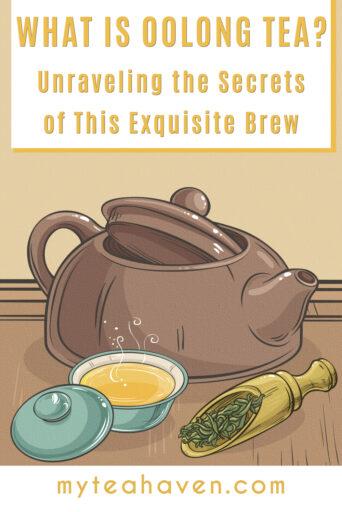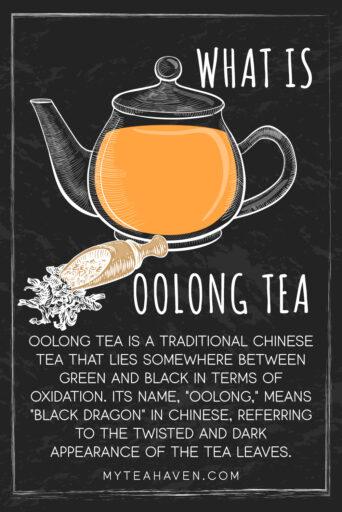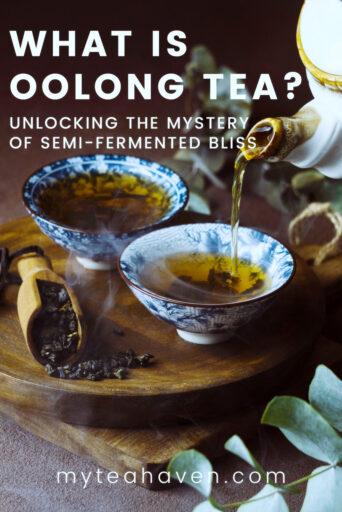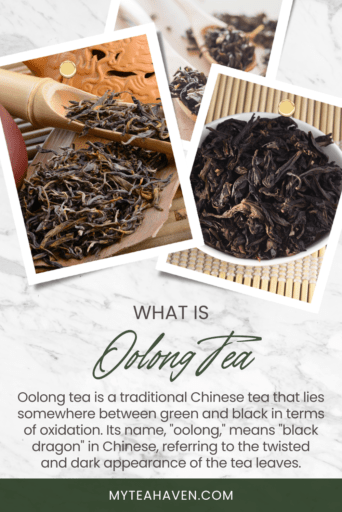What is Oolong Tea? Unraveling the Secrets of This Exquisite Brew
Welcome to Oolong Tea
Introduction
It’s time for us to talk about the fascinating world of oolong tea! Today we’ll discuss its production process, and how it sets itself apart from other teas. So, grab a cuppa, sit back, and join me on this aromatic journey.
We are a participant in the Amazon Services LLC Associates Program, an affiliate advertising program designed to provide a means for us to earn fees by linking to Amazon.com and related sites. This post may contain affiliate links which means we may receive a commission, at no cost to you, for purchases made using our links. Please see my disclosure to learn more. Unless otherwise stated, all prices are in US$.
What is Oolong Tea?

Oolong tea is a traditional Chinese tea that lies somewhere between green and black in terms of oxidation. Its name, “oolong,” means “black dragon” in Chinese, referring to the twisted and dark appearance of the tea leaves.
This variant has a rich history dating back centuries and is cherished for its complex flavors and health benefits.
Definition and Origins
The origins of oolong tea can be traced back to the Fujian province in China, where it has been cultivated for centuries. Legend has it that it was discovered by a tea farmer who stumbled upon a tea plant with leaves that resembled a black dragon. This gave rise to the name “oolong,” which means “black dragon” in Mandarin Chinese. Since then, oolong tea has been cherished and perfected by tea artisans, making it one of the most sought-after teas in the world.
It’s made from the leaves of the Camellia sinensis plant, the same plant that produces green, black, and white teas. What distinguishes it from its counterparts is its partial oxidation, typically ranging from 10% to 80%, which results in a unique taste profile.
Varieties and Flavors
Oolong tea comes in a wide variety of flavors, each with its own unique characteristics. Some popular varieties include Tie Guan Yin, Da Hong Pao, and Dong Ding. These teas can have notes of floral, fruity, toasty, or even honey-like flavors, depending on factors such as the cultivation and processing techniques.

VAHDAM, High Mountain Oolong Tea Leaves from Himalayas
A high grown oolong tea loose leaf from the mystical plantations of Darjeeling, India which is popularly known as the ‘Champagne of Teas’ & is known to produce the world’s finest loose leaf teas. Relish a light and floral-fruity Oolong tea from the premium tea plantations in the Himalayas renowned for its subtle flavor.
Production Process
The production of oolong tea involves several meticulous steps that contribute to its distinctive characteristics. Let’s explore this exciting journey!
Harvesting and Withering
The process begins with the careful handpicking of tea leaves, typically in the early morning. The leaves are then spread out to wither, allowing them to lose moisture and become supple. This step is crucial in preparing the leaves for the next stage of production.
Oxidation and Fermentation
After withering, the leaves are gently bruised or shaken to promote oxidation. This step, known as “fermentation” in the tea industry, triggers a chemical reaction that leads to the development of the tea’s unique flavors. The oxidation level is carefully controlled, as it determines the final character of the tea.

Roasting and Aging
Once the desired level of oxidation is reached, the leaves undergo a roasting process to halt the oxidation and enhance the tea’s flavors. Roasting also contributes to the development of a pleasant aroma. In some cases, it’s aged to further deepen its flavors, similar to the aging process of fine wines.
Distinction from Other Teas
Oolong tea possesses distinct qualities that set it apart from other variants.
Green vs. Oolong Tea
While both green and oolong tea come from the same plant, their processing methods differ significantly.
Green tea undergoes minimal oxidation, preserving its fresh, grassy taste. On the other hand, oolong tea undergoes partial oxidation, resulting in a more complex flavor profile and a richer body.
Black vs. Oolong Tea
Unlike oolong tea, black tea undergoes complete oxidation, which leads to a robust and bold flavor profile. Oolong, with its partial oxidation, offers a delicate balance between the lightness of green and the intensity of black. It is often appreciated for its nuanced flavors and soothing aroma.
Brewing and Enjoying
To fully appreciate the flavors and aromas of oolong tea, proper brewing techniques are essential.
Water Temperature and Time
The water temperature and steeping time significantly impact the taste. Generally, using water around 195°F (90°C) and steeping the leaves for 2-4 minutes is recommended. That being said, it’s worth experimenting with different parameters to find your preferred balance of flavors.
Teaware and Infusion Methods
Choosing the right teaware can enhance your tea experience. Porcelain or clay teapots are popular choices as they allow the flavors to develop harmoniously. Gongfu-style brewing, which involves multiple short infusions, is often favored to extract the tea’s full range of flavors.

Handmade Chinese Kungfu Tea Set
Chinese style kungfu tea set made with high quality ceramic and purple clay.
A Few Final Thoughts
Oolong tea is a captivating and versatile beverage that bridges the gap between green and black teas. Its unique production process, delicate flavors, and potential health benefits make it an excellent addition to any tea collection.
So, the next time you seek an experience that is both intriguing and satisfying, consider indulging in the delightful world of oolong tea.

Some Questions You Might Have
- Does oolong tea contain caffeine?
Yes, it does contain caffeine. The exact amount may vary depending on the specific variety and brewing method. It generally has less caffeine than black but more caffeine than green tea.
- Can I drink it if I’m sensitive to caffeine?
If you’re sensitive to caffeine, I’d suggest monitoring your consumption. You can choose lighter oolong teas or consider shorter steeping times to reduce the caffeine content.
- How should I store my tea to maintain its freshness?
To preserve the freshness and flavors, it’s recommended to store it in an airtight container away from direct sunlight, heat, and moisture. This will help extend its shelf life and maintain its quality.
- Can I reuse the tea leaves for multiple infusions?
Absolutely! The leaves are often suitable for multiple infusions. In fact, subsequent infusions can bring out different nuances of flavors. Adjust the steeping time accordingly for each infusion to ensure a delightful tea experience.








Comments are closed.